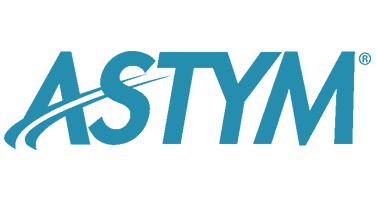
01 Aug Stopping Heel Pain: Advice from the Experts on Plantar Fasciitis
Do you ever wake up with pain in the heel of your foot first thing in the morning? If so, you may have plantar fasciitis which is the most common type of heel pain. Plantar fasciitis typically feels like a sharp pain in the heel and sometimes travels into the arch of your foot. The pain is usually worse with standing after lying down or sitting for prolonged periods of time. The pain may ease some with walking, but will generally increase by the end of the day or with activities such as running.
The plantar fascia is a thick ligament on the bottom of the foot that connects the heel to the toes and helps support the arch. It was previously thought that the pain from plantar fasciitis was caused by inflammation of the plantar fascia. However, recent research has shown there is rarely inflammation in the plantar fascia in patients with heel pain. Instead of inflammation, there are degenerative changes in the plantar fascia. This has obvious treatment implications. Traditional treatment for plantar fasciitis frequently targets inflammation and includes ice, anti-inflammatory drugs, or steroid injections. While these interventions may help decrease your pain, symptoms frequently return because the root cause of the problem is not addressed.
Stretching the plantar fascia and calf muscles along with decreasing activity can frequently ease the pain. An arch support may also help support the plantar fascia. However, if these simple remedies fail to relieve symptoms, it is likely the addition of “manual” or “hands-on” treatment will help. The degenerative plantar fascia can be addressed with a treatment called Astym which has been shown to be effective in stimulating ligaments to regenerate and heal. The optimal treatment program will not only address the degenerative plantar fascia, but also address other factors that can contribute to the painful heel. These may include tightness in the calf muscles, stiffness in the ankle, knee and hip joints or weakness in the hip or leg muscles. A thorough examination will identify if these may be contributing to the symptoms. The calf muscles will frequently have tight bands or “knots” in the muscles commonly called “trigger points.” Releasing these trigger points with “hands on” massage techniques can help reduce plantar fasciitis pain. The trigger points can also be released with a technique called trigger point dry needling which involves the insertion of a very small needle into the muscle. A recent clinical trial has also shown “hands on” treatment to the plantar fascia and joint mobilization to loosen stiffness in the foot, ankle, knee, or hip combined with specific exercise is more beneficial for relieving plantar fasciitis than exercise and commonly used treatments such as ultrasound and iontophoresis (a treatment where electricity is used to administer a steroid medication).
If you suffer from plantar fasciitis, it is important to remember treatment should include more than simply treating your heel. Although your pain may only be in your heel, other factors are likely contributing to your pain. Even if you have been suffering from plantar fasciitis for years, there is still hope for getting you back to the activities you love.
Dr. Tim Flynn and Dr. Terry Gebhardt are physical therapists and owners of Colorado Physical Therapy Specialists in Fort Collins, Colorado; you can find more information about their clinic here.
Meet today’s guest bloggers:

Dr. Timothy W. Flynn, PT, PhD
Dr. Flynn is board certified in Orthopaedic Physical Therapy (OCS), a Fellow of the American Academy of Orthopaedic Manual Physical Therapists (FAAOMPT), and a frequent research presenter at state, national, and international meetings. Dr. Flynn is widely published including 5 textbooks, 6 book chapters, over 50 peer-reviewed manuscripts on orthopaedics, biomechanics, and manual therapy issues. He was the editor and author of The Thoracic Spine and Ribcage – Musculoskeletal Evaluation & Treatment and The Users’ Guides to the Musculoskeletal Examination, and the author of 3 educational CD-ROMs on Orthopaedic Manual Physical Therapy. Dr. Flynn has received numerous research grants. Awards include the James A. Gould Excellence in Teaching Orthopaedic Physical Therapy, the Steven J. Rose Excellence in Research (twice), the AAOMPT Outstanding Research Award (twice), and the Distinguished Alumnus- Marquette University Program in Physical Therapy. Dr. Flynn continues to maintain an active research agenda in the areas of spinal and extremity manipulation, low back disorders, characterization of spinal instability, and the development of clinical prediction rules.
Dr. Flynn is an expert clinician who is dedicated to providing the highest quality care possible. His primary clientele is made up of individuals suffering from low back pain, chronic spinal disorders, failed back surgeries, and chronic pain disorders. Dr. Flynn’s clinical expertise is frequently sought by national and international clients. He is on the executive board of Evidence in Motion an education and practice consultation company which passionately promotes a culture of evidence-based practice within the physical therapy profession. Dr. Flynn is the immediate past President of the American Academy of Orthopaedic Manual Physical Therapists, an Associate Editor for the Journal of Orthopaedic & Sports Physical Therapy (JOSPT), and editorial board member of Manual Therapy. He is a Distinguished Professor of Physical Therapy at Rocky Mountain University of Health Professions where he teaches professional and post-professional students in the area of musculoskeletal management, advanced manipulation skills, and evidence-based practice.

Dr. Terry Gebhardt, PT, DPT
Dr. Gebhardt completed his Master of Physical Therapy at the U.S. Army-Baylor University Graduate Program in 1998. During Dr. Gebhardt’s 7 years of physical therapy practice in the Army he specialized in treating a broad range of musculoskeletal injuries. He has worked extensively with injury prevention initiatives and has been a leader in the development of training programs designed to maximize fitness while preventing injury. Dr. Gebhardt relocated to Colorado in 2004 to complete his Doctorate of Physical Therapy degree and Fellowship in Manual Therapy at Regis University. His areas of clinical expertise and interest include spine and sports rehabilitation where he incorporates his passion for fitness with physical therapy.
Dr. Gebhardt is an avid back country skier and ultramarathoner. He is a member of the American Physical Therapy Association (APTA), American Academy of Orthopaedic Manual Physical Therapists (AAOMPT) and a Certified Strength and Conditioning Specialist (CSCS). He has also published research in the Journal of Orthopaedic and Sports Physical Therapy and is currently active in clinical research.




